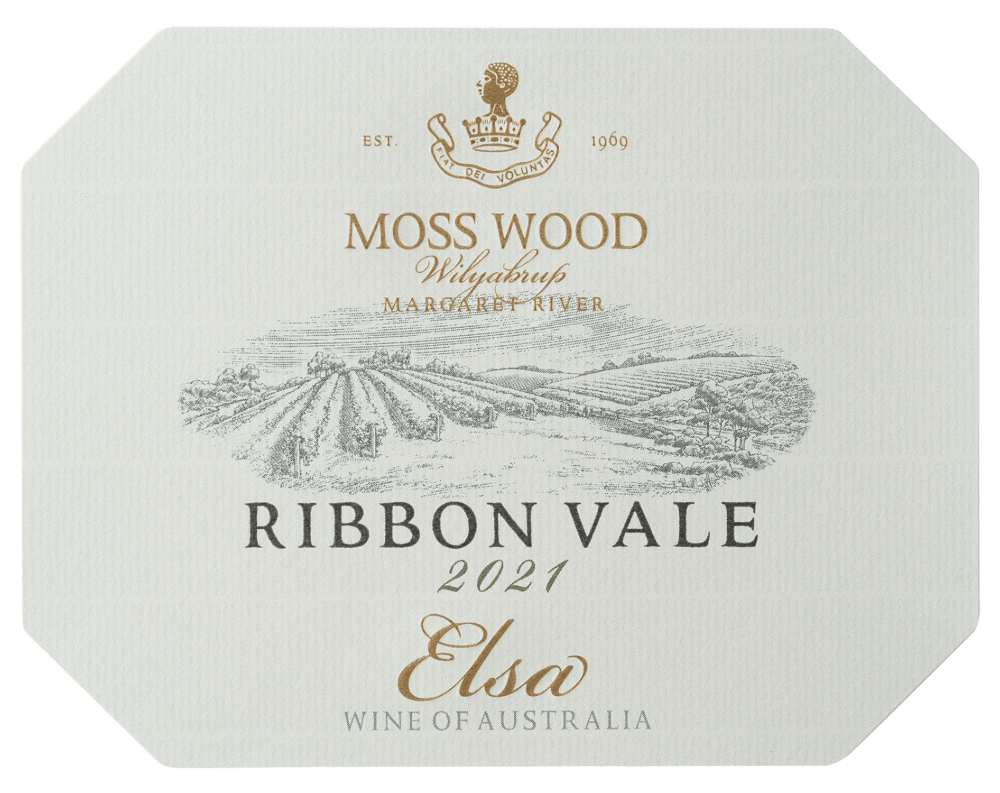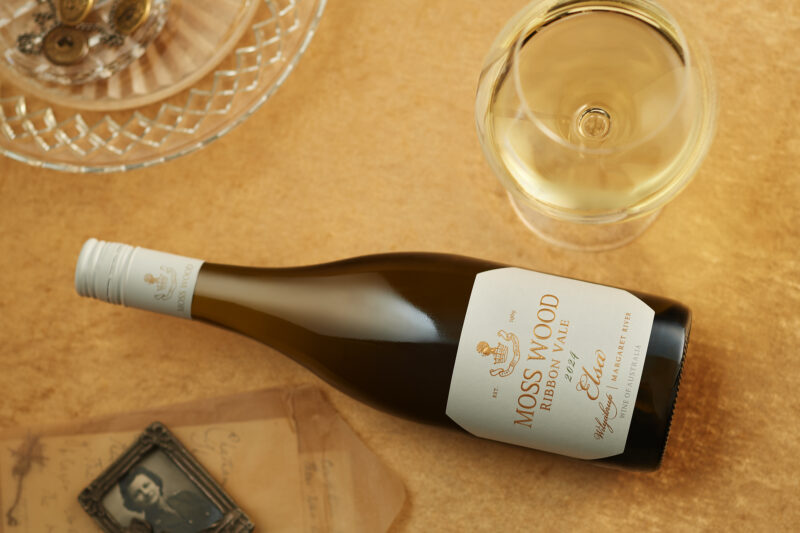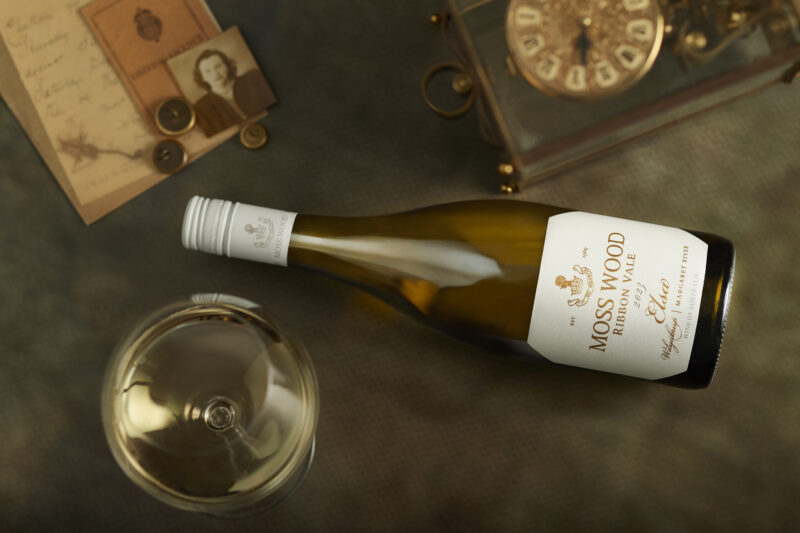Moss Wood Ribbon Vale 2021 Elsa

| Wine Facts | |
|---|---|
| Wine Facts Median Harvest Date | 20/03/2021 |
| Wine Facts Harvest Ripeness | 12.7 °Be |
| Wine Facts Yield | 13.17 t/ha |
| Wine Facts Day Elapsed between Flowering and Harvest | 108 days |
| Wine Facts Bottled | 14/01/2022 |
| Wine Facts Released | 04/03/2022 |
| Wine Facts Alcohol | 13.5% |
| Wine Facts | |
|---|---|
| Wine Facts Median Harvest Date | 20/03/2021 |
| Wine Facts Harvest Ripeness | 12.7 °Be |
| Wine Facts Yield | 13.17 t/ha |
| Wine Facts Day Elapsed between Flowering and Harvest | 108 days |
| Wine Facts Bottled | 14/01/2022 |
| Wine Facts Released | 04/03/2022 |
| Wine Facts Alcohol | 13.5% |
Moss Wood Ribbon Vale 2024 Elsa – Huon Hooke, The Real Review
Bright light yellow colour; complex toasty, nutty bouquet, evidencing barrel fermentation, the palate following on with this theme with savoury dryness, super-intense flavour and a very dry, energetic and lingering finish. The oak is very well handled. A superb wine in the white Bordeaux style.
VINTAGE NOTES
2021 Ribbon Vale Vintage
The 2021 vintage was like travelling some way back in time, to 1989 in fact. It’s a long time since we’ve experienced the amount and timing of rain that ’89 brought us but in 2021 Mother Nature gave us another of her subtle reminders that she calls the shots.
Through the early part of the season, conditions were benign with good spring rain, mild temperatures and no big storms to belt the vineyards with strong winds and hail. Flowering proceeded in excellent conditions and we were hopeful of good crops.
As we moved through summer, it was notable that temperatures were on the low side, making beach-going conditions a little bit cool. Apart from that First World problem the vines made steady progress and we planned for a slightly later vintage. On 4th February, a Tropical Low crossed the WA coast at Shark Bay and the remnant rain made its way down the coast to Margaret River, where it delivered just over 80mm.
Fortunately, the 2021 growing season was cooler than 1989 and so when the rain came, both Sauvignon Blanc and Chardonnay were still relatively green. The berries were quite firm and didn’t split which in turn meant we had no disease problems and this allowed us to wait until temperatures warmed up and ripening got going again. That said, continuing mild conditions really tested our patience towards the end and we were relieved when Sauvignon Blanc was finally ready to harvest on 20th March, 3 weeks later than average. Chardonnay followed 5 days later.
Not surprisingly, given the regular rainfall, the season produced good crops. Sauvignon Blanc finally got moving after a succession of lighter years and gave us a solid 13 tonnes per hectare. Even for a variety with a propensity for high yields, we were pretty proud of that, especially given our vineyards are unirrigated. The Chardonnay, although a shy bearer, did well too, giving us just over 5 tonnes per hectare.
PRODUCTION NOTES
This is the third vintage of our Elsa wine and we feel we’re making progress with the style. In the search for more complexity of aroma and flavour, we’re now picking the Sauvignon Blanc riper. The original “Elsa” in 2019 contained 12.7% alcohol but in 2020 we upped this to 13.9% and felt that vintage had more depth and we continue this theme in 2021, with 13.5%.
With the higher level of ripeness comes a more interesting nose. Although Sauvignon Blanc has a terrific freshness, courtesy of the gooseberry and grassy notes, too much of this leaves the wine a bit one dimensional. By picking at higher sugar levels, these are enhanced by lychee, pear and passionfruit. Perhaps more importantly, the higher alcohol brings much richer texture to the palate, something we see as important in balancing the variety’s natural high acidity.
Apart from the changes to fruit ripeness, the production technique continues as before. The Sauvignon Blanc was hand-picked then sorted, de-stemmed, crushed and loaded into the presses. After 2 hours skin contact it was drained and pressed and settled in stainless steel tank. After 24 hours the clear juice was racked to a second tank and seeded with multiple yeast strains for primary fermentation, controlled to 18°C. At the halfway point the fermenting juice was racked to wood and temperatures were allowed to climb to ambient, typically around 22°C. The barrels were 228 litre French oak and 10% were new. Once primary fermentation was completed all barrels were racked and blended in stainless steel and the wine returned to barrel for malolactic fermentation. Once that was completed all barrels were racked and blended in stainless steel, the wine adjusted for acidity and SO2 and the finished wine was returned to barrel, where it stayed until the first week of January 2022. All barrels were then racked and blended and fining trials were carried out to assess tannin balance. None improved the wine, so it was fined only with bentonite for protein stability. It was then sterile filtered and bottled on 14th January, 2022.
.
Tasting Notes
Colour and condition:
Light to medium straw hue; green tints; bright condition.
Nose:
Perfumed with lifted, floral scents of lychees, limes, frangipani and lavender combined with guava lemon curd and caramel and a background of toasty oak notes.
Palate:
This is fresh and crisp with medium to full body and lifted acidity, giving a Chablis-like flintiness; there are generous lime, lychee, honey dew melon, caramel and preserved lemon flavours filling the mid palate, making the wine relatively round and generous and there is a touch of oak and tannin on the finish.
Cellaring:
The bright fruit notes are very attractive and certainly give the wine early drinking appeal. However, the fresh acidity and firm tannin will allow it to cellar for at least 10 years. This will see the palate soften and overall complexity will improve with the emergence of a bottle bouquet of toast and butter.



